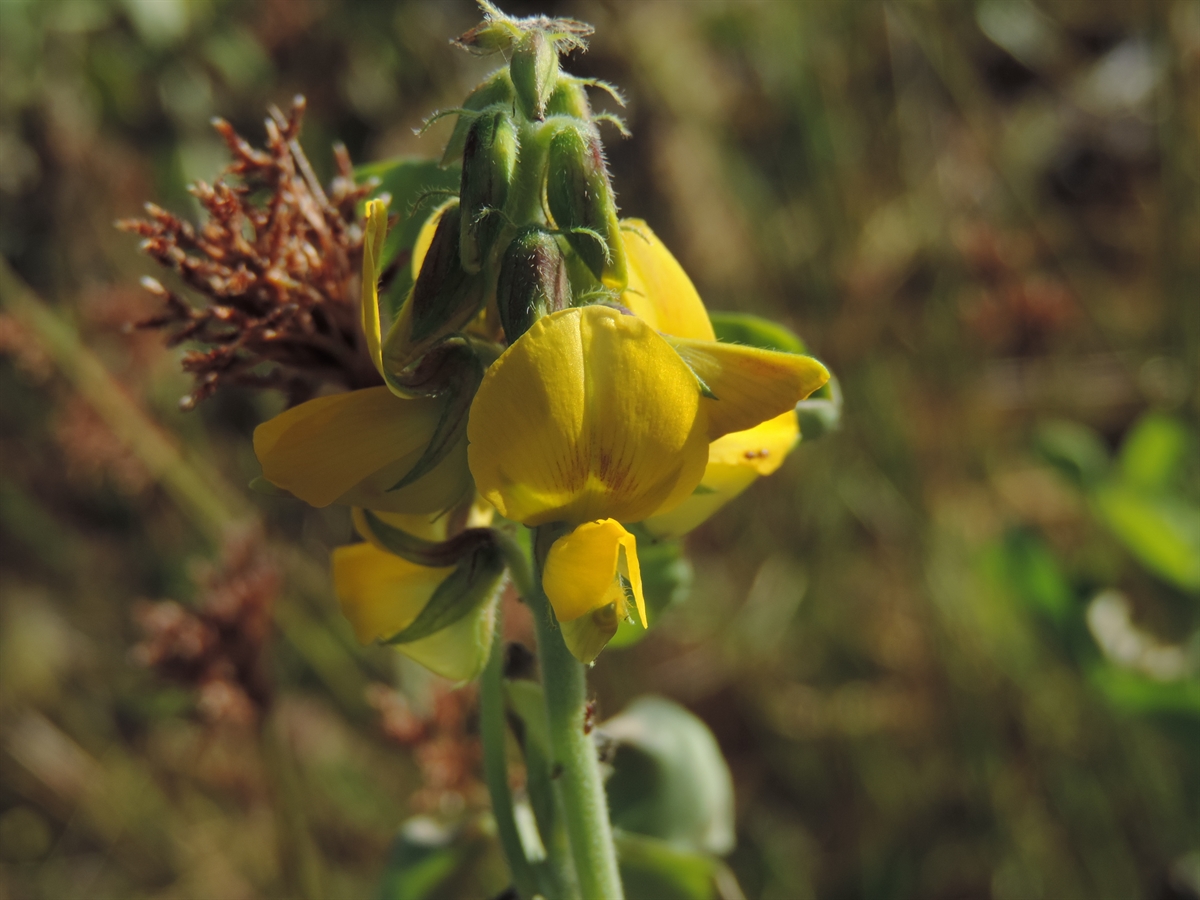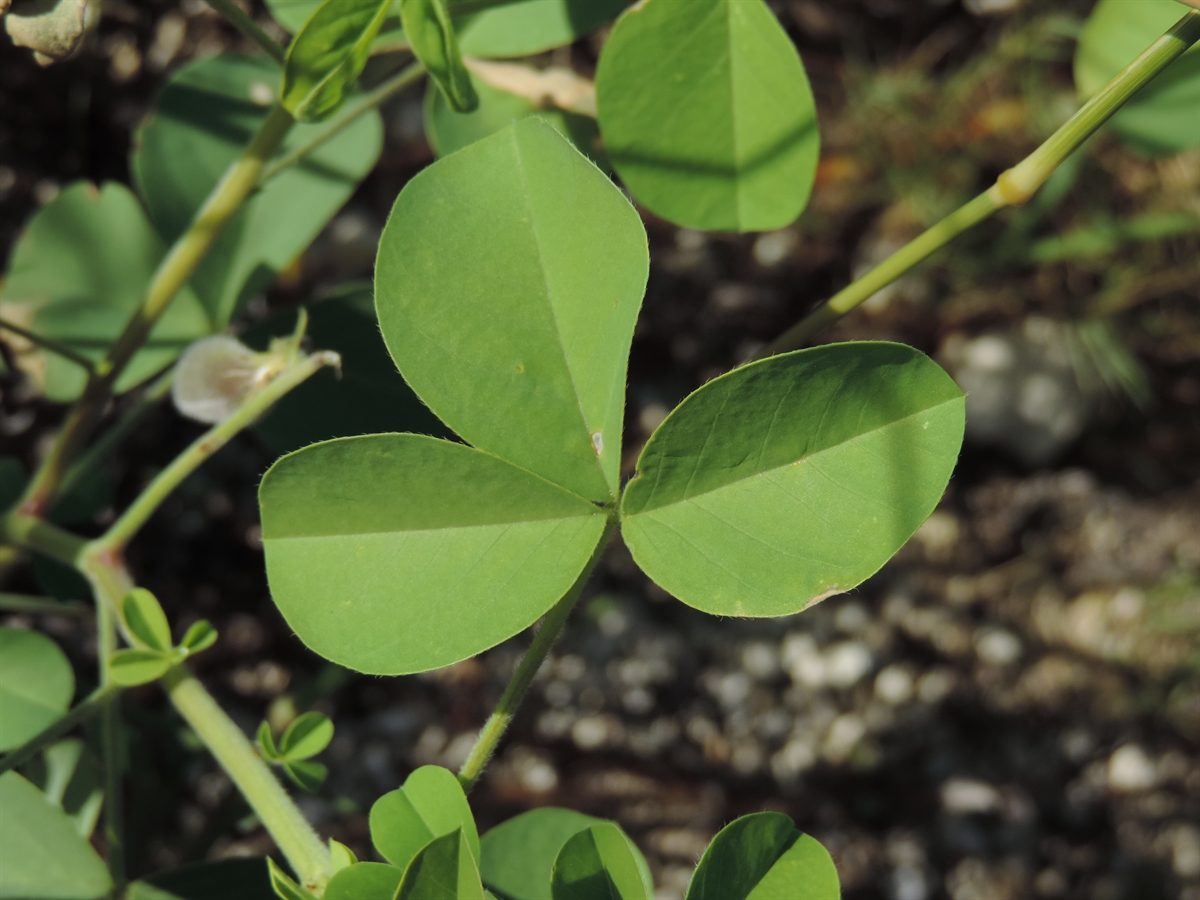Habit: Crotalaria incana grows as a perennial as a ground cover or erect as a tall herb to 70 cm in height. New vegetation is pubescent. The trifoliate leaves are arranged alternately with small deciduous stipules at the petiole base. The leaflets are obovate/elliptic with a mucronate leaf apex and an entire margin. The abaxial leaf surface is minutely pubescent.
The complete, perfect, zygomorphic flowers are terminal or axillary in groups of 1-5 flowers. The calyx has 5 partially fused, pubescent green sepals forming a tube with the sepal lobes the same length as the tube. The corolla has 5 yellow pubescent petals, the upper enlarged to form the banner (has red lines at base) and the lower 2 fused to form the keel. There are 10 diadelphous stamens. The ovary is superior and has a single locule with numerous seeds. The fruit is a pubescent, brown legume that becomes inflated and is up to 2 cm in length at maturity. Before dehiscence the seeds become loose within the legume and make a rattling sound.
Habitat: Crotalaria incana grows in Human Altered environments (old fields, yards roadsides) as well as in Dunes/sandy areas.
Distribution: Crotalaria incana occurs in all island groups within the Lucayan Archipelago as well as the southern United States, the entire Caribbean region, and Mexico south to South America. It is now an invasive species in Africa, the Indian subcontinent, Asia, the Pacific, and Australia.
Medicinal/Cultural/Economic usage: Crotalaria incana is not known to be used medicinally in the Lucayan Archipelago.


